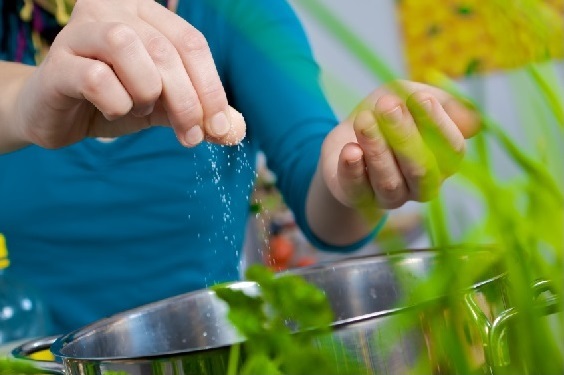
Close your eyes for a minute. Now visualize a large dining room table filled with beautifully prepared and expertly displayed foods, many of which are your favorites. You then start to imagine how delicious those foods would taste if you weren’t just envisioning them in your mind.
But when you snap out of it, you realize that even though those foods made a pretty picture, they might not be so scrumptious if an untrained cook prepared them. That’s where seasoning comes into play.
I had to laugh out loud when recently reading a very well-written article in the Chicago Tribune about improperly seasoned foods. Titled “Seasoning properly is downfall of most cooks; Seasoning food properly makes all the difference in taste,” it really hit the nail on the head in more ways than one.
The writer, James P. DeWan, did not mince words. “Do you keep a salt shaker on the dining-room table? More important, do you use it on the food on your plate? If so, then I’d like to suggest that you may not be seasoning your food properly. Let’s fix that, shall we?”
While he inferred that most people are lousy cooks, he clarified that he meant “most people don’t know how to make food taste its very best. And a lot of it comes down to how the food is seasoned.”
I appreciated the fact that he noted there are “about three gajillion flavors (chocolate, sage, beef, dirt, rack of zombie, etc.), but there are only five tastes: sweet, sour, salty, bitter and umami.”
“This Needs Something!”…
Of these five tastes, he wrote in depth about umami. DeWan stated, “This deep, rich, meaty taste is about glutamate, a chemical indispensable to our metabolism. Meat, mushrooms and fermented foods like soy sauce are all high in umami. So is breast milk. Think about that: Breast milk, the stuff literally of life, is both high in umami and sweet from lactose. Once again, it makes perfect sense that our species would evolve receptors for these tastes.”
But getting back to the topic of seasoning food properly, he remarked that “occasionally we taste things and think, ‘Hmm, this needs something. Right?’”
Mr. DeWan, who teaches culinary arts at Kendall College in Chicago, underscored that properly seasoning at each of the preparation stages is key. Just as importantly, a food might be missing more than the obvious. “Sometimes dishes clearly have enough salt but are still missing something. That’s when I think sour or umami,” he explains. “… if something feels pale and wan or lacking in depth — this happens a lot in meatless dishes like tomato sauces or vegetable soups — get some umami in there. Parmesan cheese (or just the rind) or a little bit of soy sauce — though again, not enough to make the dish taste vaguely Asian — both bring umami and its accompanying depth of flavor. (By the way, that’s why many Chinese restaurants add monosodium glutamate: Since they rely so heavily on vegetables, their dishes lack the natural umami that would come with a heavier meat presence.)”
A savory thanks to Mr. DeWan for his insight and delightful way of seasoning up what might otherwise be a bland topic. Bravo!
Ready to make some unique dishes that are bursting with umami flavor? Here you go!

